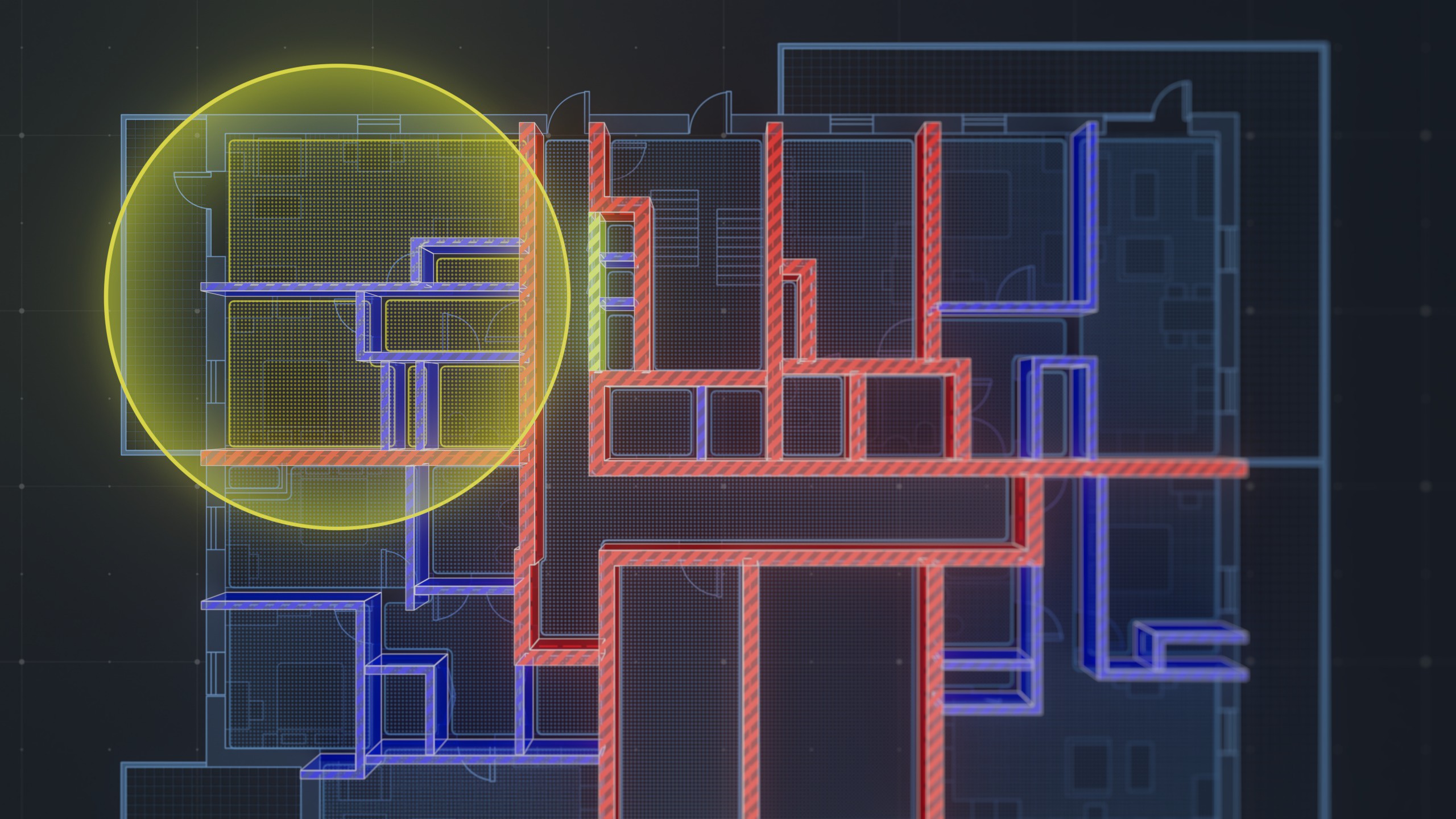In the world of project management and construction, accurate documentation and clear communication are essential for successful execution. Two commonly used terms in this context are Bill of Quantities (BOQ) and Bill of Materials (BOM). While they may sound similar, BOQ and BOM serve distinct purposes and play different roles in project planning and execution. In this article, we will explore the differences between BOQ and BOM, shedding light on their individual definitions, applications, and significance.
Definition and Purpose
Bill of Quantities (BOQ):
Definition:
The Bill of Quantities (BOQ) is a comprehensive document that provides a detailed list of materials, quantities, and associated costs required for a construction project. It serves as a tendering and procurement tool, enabling accurate estimation of project costs and facilitating the bidding process.
Purpose:
The main purpose of a BOQ is to ensure clarity, transparency, and fairness in the tendering process. It allows contractors and suppliers to understand the project requirements, quantities, and specifications, enabling them to submit competitive bids. Additionally, a BOQ serves as a reference document during project execution, assisting with cost control, material procurement, and progress monitoring.
Components of a BOQ:
A typical BOQ includes the following components:
- Item Description: A clear and concise description of each item or activity involved in the project.
- Unit of Measurement: The specific unit (e.g., meters, kilograms, hours) used to measure the quantities of each item.
- Quantity: The estimated or measured quantity required for each item.
- Rate: The unit price or cost per quantity of each item.
- Amount: The calculated cost for each item (quantity multiplied by the rate).
- Summary: An overall summary of the quantities and costs for each section or trade, along with any applicable taxes or contingencies.
Bill of Materials (BOM):
Definition:
The Bill of Materials (BOM) is a structured list of all the materials, components, parts, and assemblies required to manufacture or produce a finished product. It provides detailed information about the specifications, quantities, and relationships between the different elements involved in the manufacturing process.
Purpose:
The primary purpose of a BOM is to ensure accurate planning, production control, and cost estimation in manufacturing processes. It serves as a reference document for engineers, production managers, and procurement teams, helping them identify the necessary materials, quantities, and specifications required to build a product. A BOM also assists in inventory management, supplier coordination, and quality control.
Components of a BOM:
A typical BOM includes the following components:
- Item/Part Number: A unique identifier for each component or part.
- Description: A detailed description of each component, including specifications and characteristics.
- Quantity: The required quantity of each component in the manufacturing process.
- Unit of Measurement: The unit in which the quantities of each component are measured (e.g., pieces, grams, meters).
- Reference Designators: The specific location or reference point where each component is used or installed.
- Sub-Assemblies: If applicable, a breakdown of sub-assemblies and their respective components.
- Hierarchy: A structured hierarchy that shows the relationship between different levels of components and sub-assemblies.
While both a BOQ and a BOM serve the purpose of specifying quantities and materials, they differ in their application and focus. A BOQ is specific to construction projects and focuses on estimating costs, while a BOM is used in manufacturing and concentrates on identifying the materials and components necessary for production.
Scope and Application:
Bill of Quantities (BOQ):
Utilization in construction projects:
- BOQs are primarily used in construction projects, including building construction, infrastructure development, and renovation projects.
- They are employed in various sectors such as residential, commercial, industrial, and civil engineering.
- BOQs cover a wide range of construction activities, including structural works, mechanical and electrical installations, finishes, and landscaping.
Role in tendering and procurement processes:
- BOQs play a crucial role in the tendering process by providing detailed information about the materials, quantities, and costs involved in a construction project.
- Contractors and suppliers use BOQs to prepare accurate bids and quotations for the project.
- BOQs enable fair and transparent evaluation of bids, as all parties have access to the same scope of work and pricing information.
- During procurement, BOQs guide the procurement team in sourcing the required materials and services based on the specified quantities and specifications.
Bill of Materials (BOM):
Use in manufacturing and production environments:
- BOMs find extensive application in manufacturing and production environments across various industries such as automotive, electronics, consumer goods, and pharmaceuticals.
- They are used for both discrete manufacturing (individual products) and process manufacturing (continuous production).
- BOMs encompass all the components, parts, and materials required to assemble or produce a finished product.
Importance in product planning and cost estimation:
- BOMs are essential for product planning, as they provide a clear roadmap of the components and their relationships, ensuring all necessary parts are accounted for.
- BOMs aid in cost estimation by determining the materials and quantities required for each product, facilitating accurate cost calculations.
- They enable efficient inventory management and help avoid shortages or excess stock of components.
- BOMs assist in identifying potential bottlenecks in the production process, ensuring a smooth and timely manufacturing workflow.
While BOQs are specific to construction projects and focus on tendering and procurement, BOMs are utilized in manufacturing settings, emphasizing product planning and cost estimation. The scope and application of BOQs and BOMs vary, aligning with the specific requirements of construction and manufacturing environments.
Content and Format:
Bill of Quantities (BOQ):
Types of items included:
- BOQs include a wide range of items related to construction projects, such as materials, labor, equipment, and services.
- These items can encompass various construction activities, such as excavation, concrete works, electrical installations, plumbing, painting, and landscaping.
- The items may also cover specialized components or systems, such as HVAC (Heating, Ventilation, and Air Conditioning), fire protection, or structural steel.
Measurement units and quantities:
- Each item listed in a BOQ is associated with a specific unit of measurement (e.g., square meters, cubic meters, linear meters, numbers).
- The BOQ specifies the quantities required for each item, which can be estimated based on project drawings, specifications, and industry standards.
- Accurate measurement units and quantities are essential for precise cost estimation and material procurement.
Pricing and cost breakdown:
- BOQs provide the basis for calculating the cost of a construction project.
- Each item in the BOQ is assigned a rate or unit cost, which can be obtained from market prices, historical data, or supplier quotations.
- The rate is multiplied by the quantity to determine the cost for each item.
- BOQs also include cost breakdowns, such as labor costs, material costs, subcontractor costs, and contingency allowances.
- Summary sections within the BOQ present the overall cost for each section or trade, along with any applicable taxes or contingencies.
Bill of Materials (BOM):
Components and sub-components:
- BOMs provide a comprehensive list of components, parts, and sub-components required to assemble or produce a product.
- Each component is identified with a unique item/part number for easy reference and traceability.
- BOMs include all the necessary materials, such as raw materials, intermediate components, and finished parts.
Specifications and descriptions:
- BOMs provide detailed specifications and descriptions for each component, including technical details, dimensions, materials, and tolerances.
- The specifications ensure consistency and accuracy in selecting and procuring the required components.
- Descriptions may also include specific supplier or manufacturer information, ensuring the correct sourcing of components.
Bill of Materials hierarchy:
- BOMs often have a hierarchical structure that represents the relationships and dependencies between different components and sub-components.
- The hierarchy helps visualize the assembly process and indicates how the components are organized.
- BOMs typically consist of multiple levels, with higher-level components representing major assemblies or sub-assemblies and lower-level components representing the individual parts within those assemblies.
The content and format of a BOQ and a BOM differ based on their respective purposes and industries. BOQs focus on items, measurements, quantities, pricing, and cost breakdowns specific to construction projects, while BOMs emphasize components, specifications, descriptions, and hierarchical organization relevant to manufacturing and production environments.
Significance and Benefits:
Bill of Quantities (BOQ):
Accurate project costing and budgeting:
- A well-prepared BOQ ensures accurate estimation of project costs, enabling effective budgeting and financial planning.
- It helps project stakeholders, including clients, contractors, and investors, understand the overall project costs and make informed decisions.
Facilitation of procurement and tendering processes:
- BOQs provide detailed information about the materials and quantities required for a project, facilitating the procurement process.
- Contractors and suppliers can use the BOQ as a reference to accurately price their bids and quotations.
- It promotes fair competition among bidders, ensuring transparency and impartiality in the tendering process.
Ensuring consistency in material quantities:
- A BOQ ensures consistency in material quantities across different sections or trades of a project.
- It helps avoid discrepancies and inconsistencies that can lead to delays, rework, and additional costs during the construction phase.
- Consistent quantities specified in the BOQ enable accurate material procurement and help prevent shortages or overstocking.
Bill of Materials (BOM):
Efficient production planning and control:
- BOMs facilitate efficient production planning by providing a clear overview of the required components and their relationships.
- They help production managers schedule production activities, allocate resources, and ensure timely delivery of products.
- BOMs enable effective production control, allowing for streamlined workflows and optimized manufacturing processes.
Quality assurance and traceability:
- BOMs play a vital role in quality assurance by specifying the required components and their specifications.
- They ensure that the correct components are used in the manufacturing process, leading to consistent product quality.
- BOMs also enable traceability, making it easier to track and manage components throughout the production and supply chain.
Improved supply chain management:
- BOMs enhance supply chain management by providing visibility into the components required for manufacturing.
- They help procurement teams coordinate with suppliers and ensure the availability of necessary materials and components.
- BOMs enable effective inventory management, reducing the risk of stockouts or excess inventory and optimizing supply chain operations.
Both BOQs and BOMs offer significant benefits in terms of accurate cost estimation, streamlined processes, and improved project or production management. While BOQs focus on construction-specific aspects, such as project costing and procurement, BOMs provide advantages in production planning, quality control, and supply chain management within manufacturing environments.
Relationship and Interdependence:
BOQ and BOM in construction projects:
- While BOQs and BOMs serve different purposes, they are interconnected and play complementary roles in construction projects.
- BOQs focus on the estimation of project costs, tendering, and procurement, providing a comprehensive list of materials and quantities required.
- BOMs, on the other hand, are primarily used in manufacturing but can be adapted for construction projects to manage the production of prefabricated components or assemblies.
- In such cases, BOMs can be derived from the BOQ, specifying the components and quantities needed for the manufacturing of pre-engineered elements.
- The BOQ serves as a reference for developing the BOM, ensuring that all required components are included.
BOQ and BOM in manufacturing processes:
- In manufacturing, the relationship between BOQs and BOMs is more direct and commonly used.
- BOMs provide a detailed list of components, parts, and materials required to assemble or produce a product.
- BOQs are not typically used in manufacturing; however, the concept of estimating costs and quantities is similar.
- The BOM serves as the foundation for cost estimation, as the quantities and specifications of components directly impact production costs.
- BOMs are used to calculate the overall cost of a product, whereas BOQs are focused on cost estimation for construction projects.
- The accurate and complete information provided by the BOM ensures efficient production planning and enables the calculation of accurate manufacturing costs.
Although BOQs and BOMs are more commonly associated with construction and manufacturing, respectively, there can be instances where the two overlap in specific contexts. Both documents aim to provide comprehensive and accurate information to support cost estimation, procurement, and efficient project or production management.
Clear understanding and proper utilization of Bill of Quantities (BOQ) and Bill of Materials (BOM) are vital for effective project management, whether in the construction or manufacturing sector. While BOQ primarily focuses on quantifying and costing materials and labor, BOM emphasizes the components required for manufacturing a product. By recognizing the differences between these two vital documents, professionals can optimize their project planning, procurement, and execution processes, leading to improved efficiency and successful project outcomes.




.png)